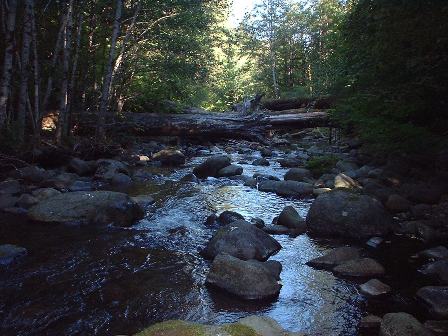Habitat
H. betteni, along with most
caddisflies, are commonly located in or around streams and
rivers throughout the world (particularly throughout North
America). Specifically, adult caddisflies are found in
vegetation near streams and rivers, whereas the larvae are found
directly in or close to streams/rivers (McLeod,
2005). H. betteni
are generally located near a little faster moving waters.
H. betteni are most active at night, but are more
scarce during the day in which they are hidden in surrounding
vegetation.
Most caddisflies, such as H. betteni, have adapted
quite well to their niche they dwell in. The running water of
the streams/rivers play many key roles in their survival and
life cycles. Particularly, it plays a key role in the feeding
and growth of the larvae, which is further explained on the
nutrition of H. betteni
(Fowler).
H. betteni plays a pretty vital role in its niche.
H. betteni lives among many other organisms: other
types of caddisflies, several differents types of insects, fish,
and several others. While this is so, H. betteni serves
as food for the fish and other aquatic vertebrates found in its
habitat (Meyer, 2005). They are valuable to the nutrition and energy
flow in the ecosystem it lives in. Another interesting role
H. betteni can play is that it gives us the ability to
study different environmental changes, such as the amount of
pollution, found in its habitat. By studying the amount of
larvae and its ability to live in different qualities of
rivers/streams, a large amount of data can be obtained (Holzenthal,
2010).
